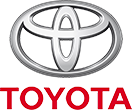Far too often I am called by a client to clean up the mess of one or more previous workflow consultants. It seems to be quite common for clients or ICT partners to use ABAP developers who like to claim that they know workflow. The consultant comes in with little or no experience, and has “Practical Workflow for SAP” tucked into their laptop bag in order to figure things out – After all, it can’t be that difficult, can it? To be honest, it’s not difficult. With some research and a little trial and error, it’s actually relatively easy to design a workflow that does the job. What is not so easy is designing a workflow that will accommodate future business change and growth. It is not so easy to design a workflow that other workflow consultants will understand and find simple to maintain. And finally, it’s not easy or even possible for inexperienced workflow consultants to provide valuable advice that only comes with experience. This advice could help clients recognise problems in their workflow engine configuration, or point out other workflow design flaws. Even more importantly, this advice could enlighten clients to the features of workflow that they never knew about – Features that might change the way they use workflow in their business. Companies seem to often justify the use of an inexperienced consultant by the low cost incurred, but of course in hindsight, it’s easy to realise the benefit of experience.
One of my recent projects included an HR Leave workflow that had already been worked on by 4 other consultants – none of them managed to complete the job ; no one in the business knew “who did what” ; transports were a mess ; the wheel was reinvented far too many times. I landed up undoing a lot of their work, and reverted to using standard business objects, steered clear of using custom tables, and added meaningful and valuable descriptions to tasks and workflow templates. By the end of it the client had a working leave workflow, which was a lot simpler in design but achieved exactly what was needed – Not only that, but the end users love the fact that more meaningful content is now being delivered to them. In the big scheme of things, user acceptance is everything – Why didn’t the previous consultants emphasize this? Even more importantly, why didn’t the previous workflow consultants finish the job properly? Because they didn’t know how to.
Another typical example recently popped up with a client of mine – I was asked to quote on the design and development of 11 QM Notification workflows. The consultant that previously worked on the project adopted a very rigid design that did not allow for any change to the business process. They also told the client that certain things could not be done. After my initial assessment, I proposed a generic workflow design that would mean one workflow for all notification types. My design included the flexibility for business change and growth – It was not restricted to particular notification types. QM configuration was used to manage deadlines and task processing. In the end, instead of creating eleven new workflows, only one was needed – It had a much simpler design, and achieved a lot more, while still reducing future maintenance costs.
The moral of the story:
- Inexperience = Low initial cost, future redesign,lower business value, less return on investment, higher overall cost of ownership.
- Experience = Higher initial cost, higher business value, higher return on investment, lower overall cost of ownership.
Experience conquers all!









